Large volcanic ash eruption at Sangay volcano, Ecuador
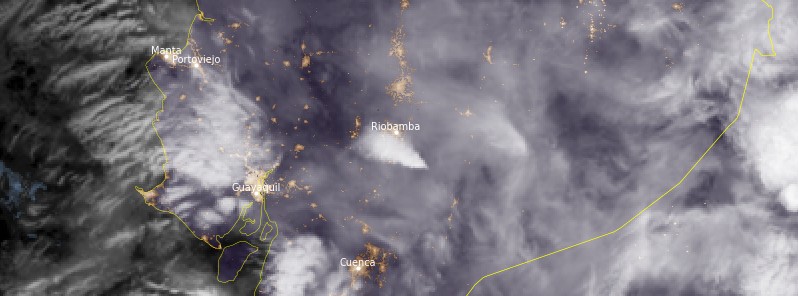
A large volcanic ash eruption started at Sangay volcano, Ecuador at around 08:20 UTC on February 8, 2022. The eruption is similar to what was observed during the greatest activity of the current eruptive period.
According to the Washington VAAC, ash column was observed rising up to 9.1 km (30 000 feet) above sea level and extending approximately 55 km (34 miles) NW from the summit at 09:00 UTC.1
At this time, there is no seismicity data due to transmission problems with the station at the volcano.
While only light rains were recorded in the sector recently, lahars could form at the volcano in case of heavy rains.
Ashfall is expected in areas W and NW of the volcano, in the provinces of Chimborazo, Bolívar, Los Ríos and Guayas. Ecuador’s Geophysical Institute is urging residents living in the affected region to take the pertinent measures and follow information coming from official sources.
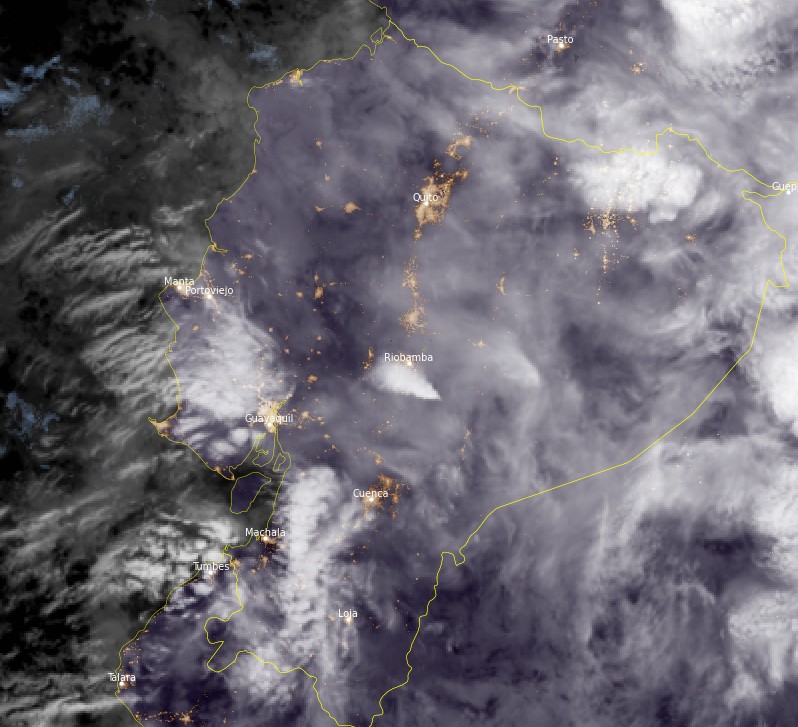
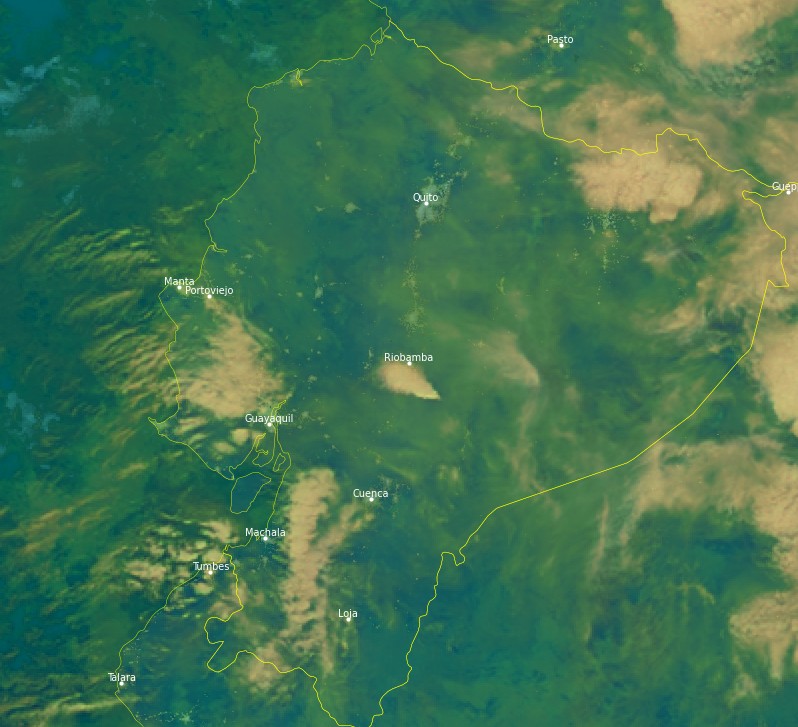
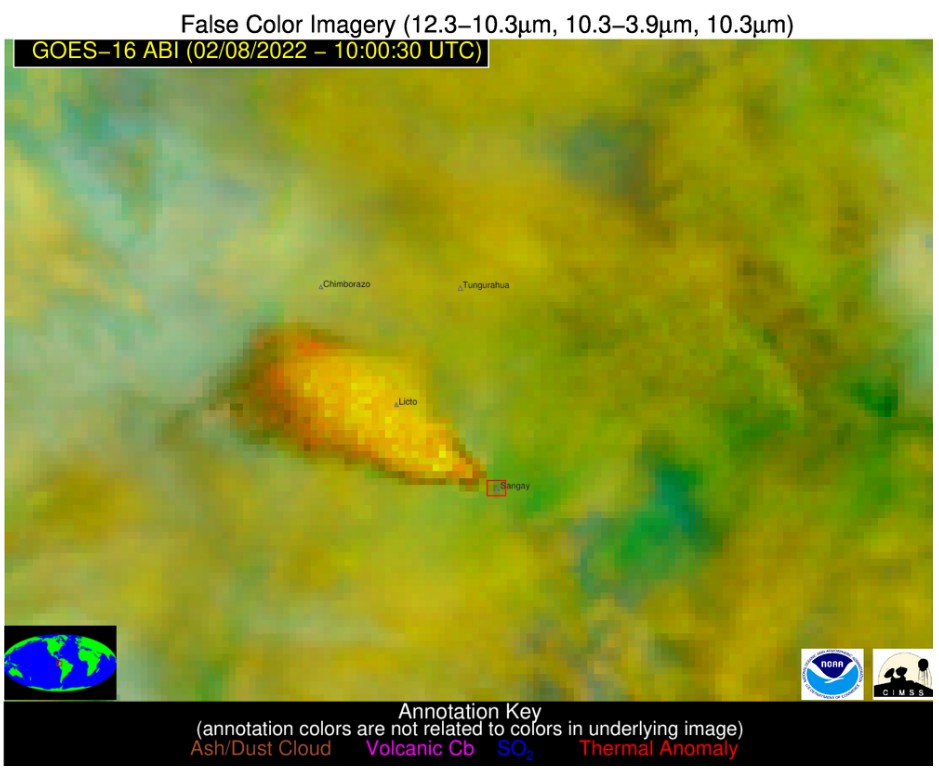

Image credit: IG, NOAA/GOES-East
A strong SO2 signal at a distance of 13.7 km (8.5 miles) from the volcano was detected by TROPOMI on February 6. The estimated mass within 300 km (186 miles) was 1.5 ktons.
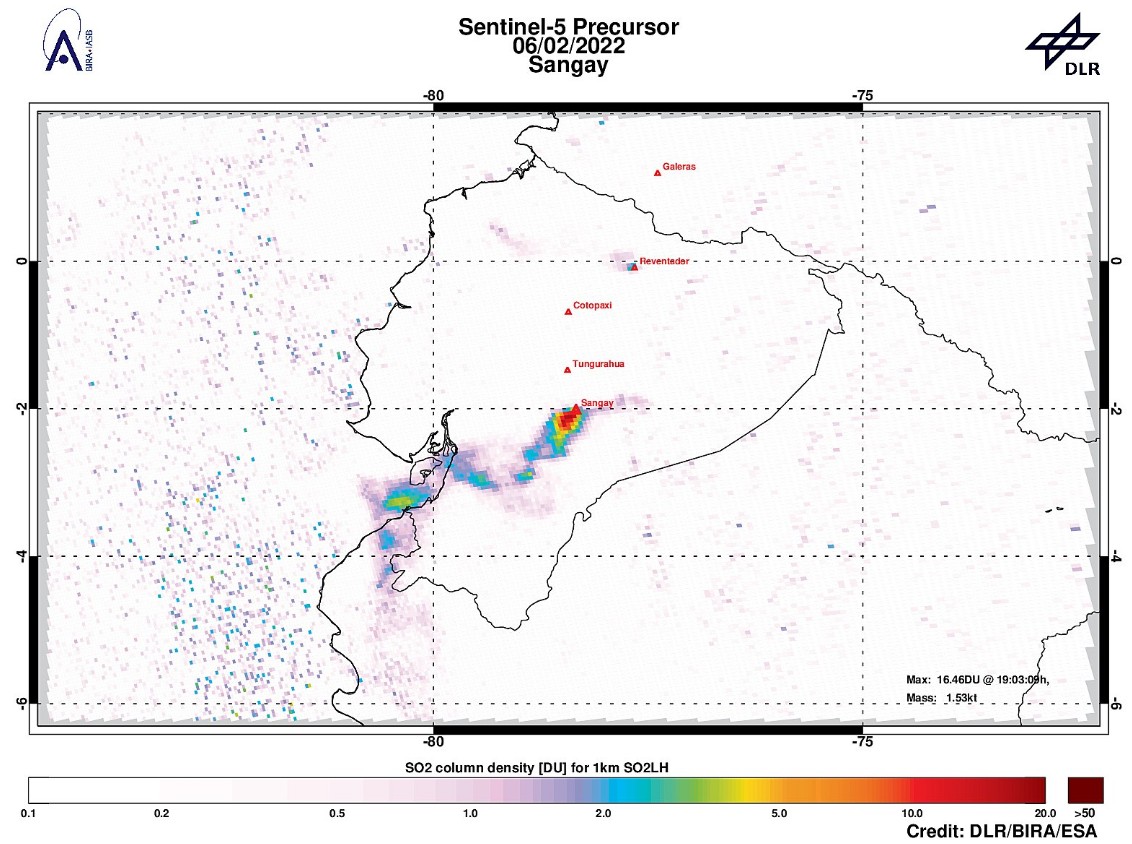

The following image of Sangay volcano was captured by IG’s webcam on February 6:
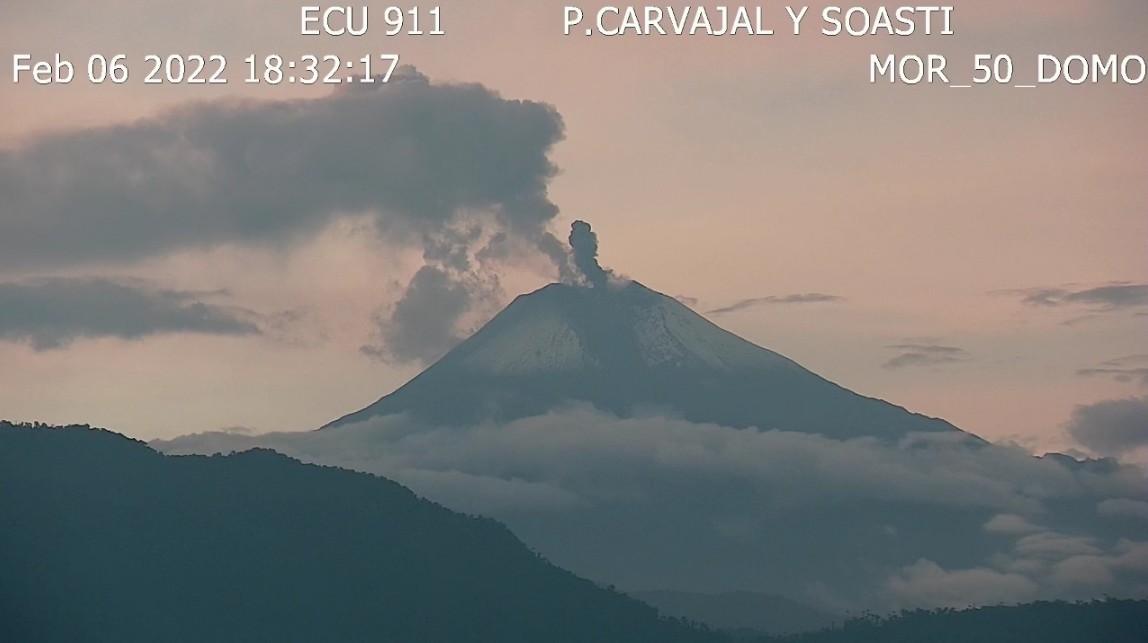

A major explosive eruption took place at Sangay at 09:03 UTC on December 2, 2021. The Washington VAAC estimated volcanic ash rising up to possibly 15.2 km (50 000 feet) above sea level.2
Geological summary
The isolated Sangay volcano, located east of the Andean crest, is the southernmost of Ecuador’s volcanoes and its most active.
The steep-sided, glacier-covered, dominantly andesitic volcano grew within horseshoe-shaped calderas of two previous edifices, which were destroyed by collapse to the east, producing large debris avalanches that reached the Amazonian lowlands.
The modern edifice dates back to at least 14 000 years ago. It towers above the tropical jungle on the east side; on the other sides flat plains of ash have been sculpted by heavy rains into steep-walled canyons up to 600 m (1 979 feet) deep.
The earliest report of a historical eruption was in 1628. More or less continuous eruptions were reported from 1728 until 1916, and again from 1934 to the present.
The almost constant activity has caused frequent changes to the morphology of the summit crater complex. This volcano is located within the Sangay National Park, a UNESCO World Heritage property.3
References:
1 FVXX21 KNES 081026 VA ADVISORY DTG: 20220208/1026Z VAAC: WASHINGTON VOLCANO: SANGAY 352090
2 Major explosive event at Sangay volcano, ash to possibly 15.2 km (50 000 feet) a.s.l., Ecuador
3 Sangay – Geological summary – GVP
Featured image: Sangay volcano at 09:50 UTC on February 8, 2022. Credit: NOAA/GOES-East, RAMMB/CIRA, TW

Commenting rules and guidelines
We value the thoughts and opinions of our readers and welcome healthy discussions on our website. In order to maintain a respectful and positive community, we ask that all commenters follow these rules.